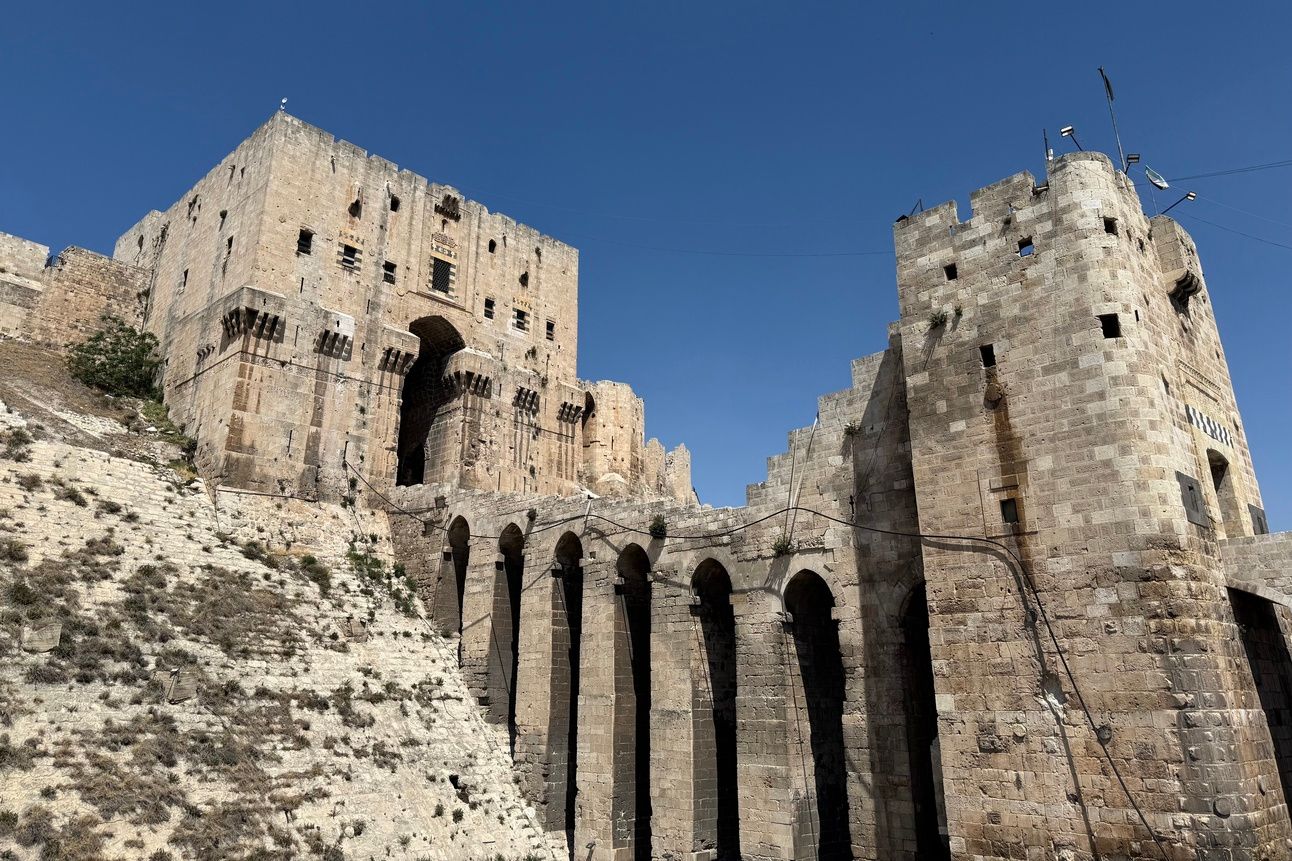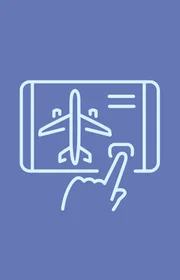Editor’s Note: This article is intended to inform and not to encourage travel to Syria. Check official safety advisories and use your own judgment before planning a trip.
Let’s be real: Syria probably isn’t on your bucket list. When you hear about it, you might think of war, danger, and destruction.
But after spending a week traveling across the country, I can tell you — the reality feels wildly different. The country is rich in history, culture, and unexpected beauty.
Here’s what it’s really like to visit Syria as a tourist in 2025.
How to Get a Visa (or Not)
Visiting Syria might sound complicated, but it’s more accessible now than it has been in years, thanks to the recent regime change.
The tricky part is that much of the new process isn’t published anywhere… so here’s how it works, based on my firsthand experience.

Photo by Mike Dodge/Daily Drop
If you enter Syria overland from Lebanon or Jordan, you don’t need to apply for a visa in advance. There are no fees, no paperwork, and no prior approval required. Just show up, answer a few questions, and get a 15-day stamp on arrival.
Want to stay longer? Go to the immigration office in Damascus and extend your stay another 15 days for free. Locals told me this process can be repeated indefinitely.
If you arrive by air, the rules are a bit different. You’ll get a visa on arrival, but you’ll need to pay a fee.
That fee varies wildly by nationality and even from one traveler to the next. U.S. citizens are supposed to be charged $300, but I met fellow Americans who paid anywhere from $75 to $200 (I haven’t heard of anyone having to pay the full $300).
This must be paid in cash, and you can’t count on ATMs or card readers once you’re in the country — so plan accordingly (more on that below).
For this reason, many travelers (myself included) choose to fly into Beirut, then travel by car to Syria, and fly out of Damascus at the end.
Dealing with Money in Syria
Syria is under heavy sanctions, so credit cards, ATMs, and digital payments do not work.
You’ll need to bring all the cash you need — ideally in U.S. dollars, which are widely accepted and easy to exchange for Syrian pounds.

Photo by Mike Dodge/Daily Drop
Expect to walk around with literal bricks of cash. At the time of this writing, one U.S. dollar is worth around 13,000 Syrian pounds, and the largest note is only 5,000 SYP. Most change is given in 2,000-pound bills, so it’s normal for people to walk around with satchels full of money.
If you run out of cash, there are workarounds. There are brokers that let you wire money to Lebanon or Europe and will give you Syrian pounds in return. It’s not ideal (they take a cut), but it works.
📣 Don’t Miss: Best Cards With No Foreign Transaction Fees
Staying Connected: Internet and Cell Service
Because of sanctions, your normal cell phone service will not work in Syria. But don’t worry — there are still ways to stay connected:
Buy a local SIM card for about $2 and get 10GB of data.
If your phone doesn’t support physical SIMs (like newer iPhones), you can do what I did — buy a cheap burner phone for about $40 and use it as a hotspot.
Wi-Fi is available in most hotels, restaurants, and cafes. Surprisingly, it’s often fast and reliable in cities like Damascus and Aleppo.
What My Trip Looked Like
My itinerary included Damascus, Maaloula, Homs, Aleppo, Hama, and the Krak des Chevaliers.
And I didn’t plan this alone…
The Guides Who Helped Me Plan This
I had help from a fantastic tour company called Syrian Guides— a small team of local experts who’ve guided well-known YouTubers like Bald and Bankrupt and Mark Wiens on their recent Syrian adventures.
They helped me arrange everything: my private driver from Lebanon, hotel stays (including locally-owned hotels not bookable online), and my entire itinerary.
They’re flexible, knowledgeable, and just genuinely fun to travel with. And they cancel trips to any region that becomes unsafe. I highly encourage you to reach out to them if you’re interested in planning a trip to Syria.

Photo by Mike Dodge/Daily Drop
Damascus
I spent the first couple of days exploring Damascus solo.
Based on my experience, the city felt surprisingly safe for tourists. I wandered the Old City, bar-hopped (yes, that’s a thing here), ate incredible Syrian food, and visited historic spots like the Umayyad Mosque, one of the oldest mosques in the world.

Photo by Mike Dodge/Daily Drop
Although I was a little nervous before getting to Syria, I felt completely at ease after spending a day in Damascus.
Maaloula and Homs
Maaloula was really cool. I had never heard of it before this trip, and it’s a unique gem of a town. Situated just an hour north of Damascus, Maaloula is an ancient Christian town nestled between two mountains.
It’s filled with old churches, monasteries, and tons of Christian history.

Photo by Mike Dodge/Daily Drop
What makes it most interesting, however, is that it’s the last place on Earth where Aramaic is still spoken, the language of Jesus. If you go to one of the churches, you can see Aramaic text, and even hear locals speaking and singing prayers in Aramaic.
Christianity was a huge theme during my trip. I’m not religious, but it was fascinating to see some of the oldest Christian history in the world and learn about the role it’s played in Syria’s long and complicated history.

Photo by Mike Dodge/Daily Drop
From Maaloula, we moved north toward Homs, the most war-damaged city in Syria.
Homs is famous for producing quirky and bright minds, including Steve Jobs, whose biological father was from Homs (seriously, look it up).
You can enjoy some delicious sweets, walk around the beautiful mosques, and see some of the devastation from the civil war, which was a harsh reality check after having seen so little destruction up to this point.
Aleppo: The Oldest City on Earth
Aleppo was the highlight of the trip. Yes, it saw some of the worst fighting of the war, but today, the city center felt safe, welcoming, and actively rebuilding.
Even the old souks (local markets) that were destroyed during the war have been rebuilt and are as lively as ever.

Photo by Mike Dodge/Daily Drop
The city is filled with gorgeous European architecture, immaculately clean streets, and friendly people who are excited to see foreigners visiting their city.
Aleppo is considered the oldest continually inhabited city in the world, and the history here is everywhere.
The Aleppo Citadel is the most famous of these places, sitting smack dab in the center of the city.

Photo by Mike Dodge/Daily Drop
This is not a place you can simply enter… You need special permission from the local tourism office and an armed guard escort (which feels excessive but is standard). Thankfully, my guides arranged it all.
I explored the Citadel during the day and admired it at night — it’s breathtaking from every angle.

Photo by Mike Dodge/Daily Drop
Hama and the Crusader Castle
Heading south, we stopped in Hama — a city that suffered a horrific massacre in the 1980s that claimed tens of thousands of lives.
Hama was mostly spared during the more recent war. Today, it’s known for its massive wooden waterwheels, which still turn above the river that runs through the city.

Photo by Mike Dodge/Daily Drop
From Hama, it was a quick one-hour drive to Krak des Chevaliers. If you think it sounds a little too European for Syria, you’re right.
It also looks a little too European to be in Syria:

Photo by Mike Dodge/Daily Drop
This massive castle, located on a mountain in the Valley of the Christians, is one of the best-preserved medieval castles in the world and was first occupied by crusaders in the 11th century.
Much like the Citadel of Aleppo, this place was like walking around a small city.

Photo by Mike Dodge/Daily Drop
And best of all? There wasn’t a single other visitor… we had the whole place to ourselves.
Is Syria Safe to Visit?
Let’s address the elephant in the room.
For the regions I visited — Damascus, Maaloula, Homs, Aleppo, Hama — I personally felt totally safe. Tense? Sure. But never in danger.
There are still parts of Syria that are off-limits, and you should absolutely avoid them. But the main tourist corridors are safe, stable, and filled with people excited to welcome visitors.
Use common sense. Follow local advice. And don’t wander into areas without clearance.
One of my guides joked, “The most dangerous thing in Syria is the sweets.” That’s probably a little bit of a stretch, but you get the idea.
Should You Go?
If you’re curious, open-minded, and not afraid to step off the beaten path, Syria will leave a mark on you.
My advice? Spend a few days solo in Damascus, then hand things over to Syrian Guides to see more of the country.
With visa rules loosening and more airlines resuming service, it’s never been easier to experience a side of Syria few outsiders ever see.
Bottom Line
Syria is one of the oldest places of human civilization. We know it from headlines — but there’s so much more beneath the surface.
Yes, it’s complicated. Yes, it takes effort to plan. But for me, this trip was unforgettable.
Even if you never go, I hope this glimpse into Syria made you pause and see a different side of a place we all think we know.








